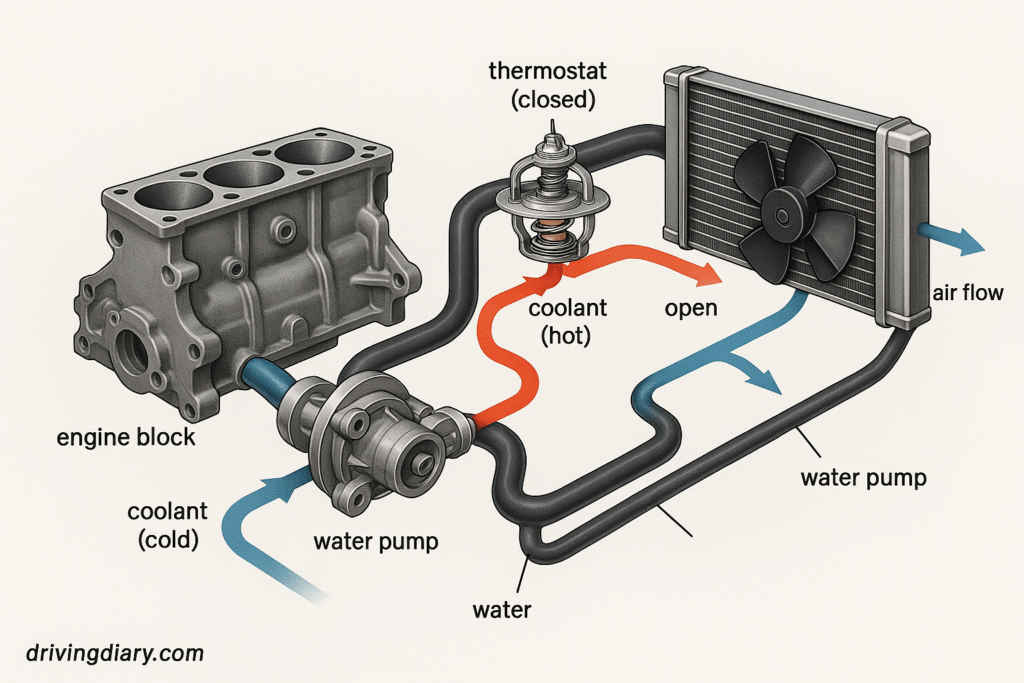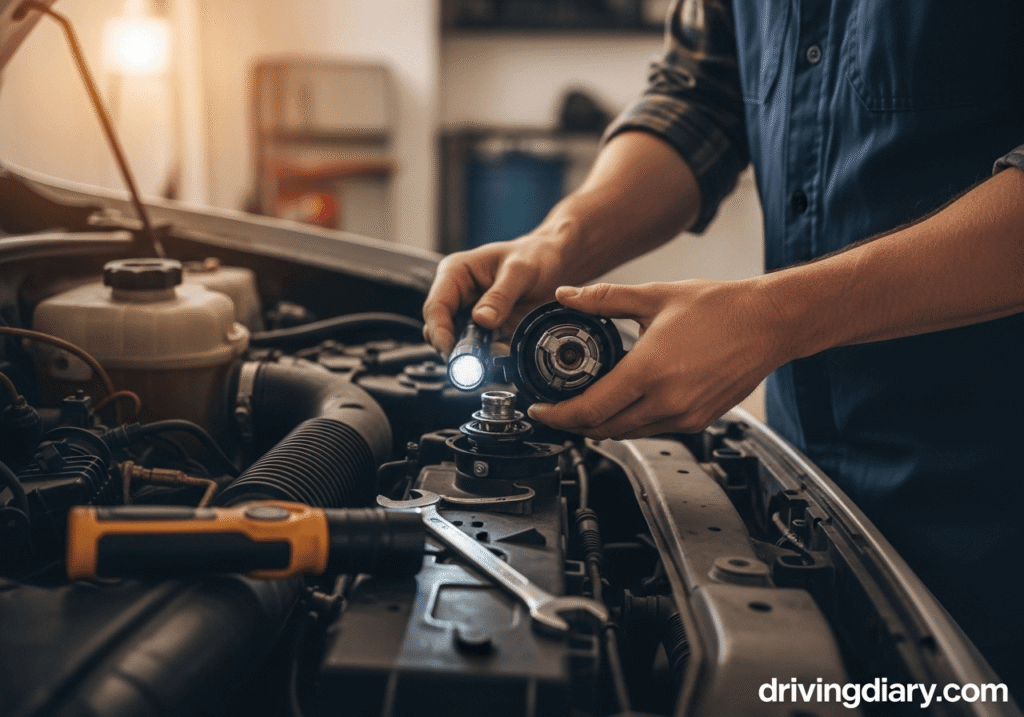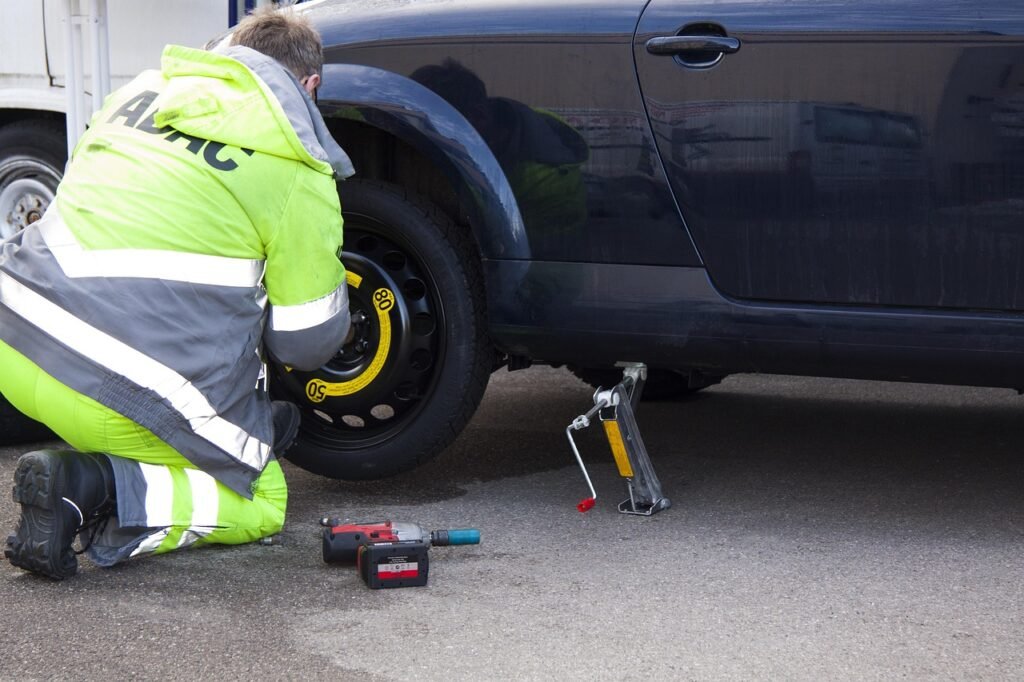When it comes to keeping your vehicle in optimal condition, the car thermostat plays a crucial role in ensuring your engine runs efficiently. A malfunctioning thermostat can lead to significant engine issues, including overheating or inefficient engine performance. In this comprehensive guide, we’ll dive deep into everything you need to know about car thermostats—what they are, how they work, signs of failure, how to diagnose and replace them, and tips for maintenance. By understanding the function and care of your thermostat, you can avoid costly repairs and improve your vehicle’s performance.
What is a Car Thermostat and Why is It Important?
The thermostat in your car is a small but essential component that helps regulate your engine’s temperature. The primary function of the thermostat is to control the flow of coolant between the engine and radiator. It ensures that the engine operates at the optimal temperature by opening and closing in response to the engine’s heat levels.
If the engine is too cold, the thermostat will remain closed to help the engine heat up faster. Once the engine reaches a specific temperature—usually around 195°F to 220°F (90°C to 105°C)—the thermostat opens to allow coolant to flow through the engine and the radiator, preventing the engine from overheating.
Why is it important?
A properly functioning thermostat helps keep your engine from overheating and also prevents it from running too cold. If the engine runs too cold, it can waste fuel and cause unnecessary wear. Conversely, an engine that runs too hot can lead to severe damage, including warped engine components or blown gaskets. So, a thermostat is essential for your car’s performance and longevity.
How Does a Car Thermostat Work?
At its core, the car thermostat is a temperature-sensitive valve that opens and closes based on the engine’s temperature. Here’s how it works:
- Cold Engine: When the engine is cold, the thermostat remains closed. This ensures that the engine warms up quickly, as the coolant is trapped in the engine. The coolant circulates within the engine to absorb heat but doesn’t yet flow into the radiator.
- Engine Reaches Optimal Temperature: As the engine heats up, the thermostat begins to open slowly. When the engine reaches the designated temperature, the thermostat fully opens to allow coolant to flow into the radiator. The radiator cools down the coolant, ensuring the engine temperature stays within a safe range.
- Thermostat Opens and Closes: The thermostat is constantly opening and closing to regulate the temperature. If the engine gets too hot, the thermostat opens further to allow more coolant to flow. Conversely, if the engine cools down too much, the thermostat closes to retain heat.
This continuous cycle ensures the engine operates within an ideal temperature range, improving performance and fuel efficiency while preventing overheating.

Common Symptoms of a Failing Car Thermostat
Thermostat failure can cause a variety of issues with your vehicle’s engine. Recognizing the symptoms early can save you from costly repairs. Here are the most common signs that your thermostat may be failing:
1. Overheating Engine
If your engine temperature gauge spikes and the engine starts to overheat, the thermostat could be stuck in the closed position, preventing coolant from flowing through the engine. Overheating can lead to severe engine damage, so it’s essential to address this issue immediately.
2. Cold Engine or Low Temperature
On the other hand, a thermostat that is stuck in the open position can cause your engine to run too cold. If your temperature gauge consistently stays on the low side, it could be a sign that your thermostat isn’t allowing the engine to warm up properly. This can also lead to poor fuel efficiency.
3. Erratic Temperature Gauge
If your temperature gauge fluctuates erratically, moving between cold and hot, it can be an indication of a failing thermostat. It may be opening and closing intermittently, causing inconsistent coolant flow.
4. Poor Fuel Efficiency
A malfunctioning thermostat can cause the engine to run either too hot or too cold, both of which negatively affect fuel efficiency. An engine that runs too cold burns more fuel, while an overheated engine may lose power and perform inefficiently.
5. Leaking Coolant
If you notice coolant leaking near the thermostat housing, this may indicate a problem with the thermostat or its housing. A faulty seal can cause coolant to escape, leading to reduced coolant levels and potential overheating.
Causes of Thermostat Failure in Cars
Several factors can contribute to thermostat failure. Understanding these causes can help you prevent future issues and ensure your thermostat lasts longer.
1. Wear and Tear Over Time
As with most car parts, thermostats are subject to wear and tear. Over time, the internal spring or valve can degrade, leading to improper function. This is especially true in older vehicles.
2. Coolant Contamination
Coolant can become contaminated with dirt, debris, or old additives. When coolant isn’t regularly replaced, it can corrode the thermostat and other cooling system components, causing the thermostat to fail prematurely.
3. Thermostat Housing Damage
The thermostat is housed in a specific compartment in the engine. If the housing is cracked or damaged, it can cause coolant leaks and prevent the thermostat from functioning correctly. This may also lead to overheating if the coolant cannot circulate as needed.
4. Engine Overheating
Ironically, engine overheating can also cause thermostat failure. If your engine overheats due to a separate issue, it can damage the thermostat’s components, causing it to malfunction or seize up.
5. Faulty Coolant Sensors
If the coolant temperature sensor or the thermostat itself is faulty, it may not communicate properly with the engine control unit (ECU), leading to thermostat problems.
How to Diagnose a Faulty Car Thermostat
Diagnosing a faulty thermostat can be relatively simple, but it may require some troubleshooting. Here’s how you can do it:
1. Basic Troubleshooting
First, monitor your engine’s temperature gauge. If the engine consistently runs too hot or too cold, this could be a sign of thermostat failure. Listen for any unusual sounds from the engine, such as gurgling or popping, which may indicate air in the cooling system due to thermostat issues.
2. Using an OBD-II Scanner
If you have access to an OBD-II scanner, check for diagnostic trouble codes related to the cooling system, such as P0128 (coolant thermostat below temperature). This can help confirm a thermostat issue.
3. Visual Inspection
Inspect the thermostat housing for visible signs of leaks or damage. Look for coolant stains or pooling around the thermostat. If you see coolant leakage, the thermostat or its housing may need to be replaced.
4. Professional Diagnostic Tools
A mechanic can use professional tools to test your thermostat’s response to engine temperature. This may include using infrared thermometers or cooling system pressure testers to pinpoint the issue.
How to Replace a Faulty Car Thermostat
If your thermostat is faulty, replacing it is the best course of action. Here’s a step-by-step guide:
1. Gather Necessary Tools
You’ll need basic tools like a wrench, screwdriver, drain pan, and new thermostat and gasket. Make sure you have the correct replacement thermostat for your car’s make and model.
2. Drain the Coolant
Before you remove the thermostat, drain the coolant from the radiator. Make sure to dispose of the coolant properly.
3. Remove the Thermostat Housing
Use a wrench to remove the bolts holding the thermostat housing in place. Carefully remove the housing and expose the thermostat.
4. Replace the Thermostat
Remove the old thermostat and install the new one. Ensure that the new thermostat is properly seated and that the gasket is in place to avoid leaks.
5. Reassemble and Refill the Coolant
Once the new thermostat is in place, reassemble the housing and refill the radiator with coolant. Check for leaks and ensure the cooling system is properly pressurized.
6. Test the Engine
Start the engine and monitor the temperature gauge. Make sure the engine reaches the proper temperature and that the thermostat is functioning correctly.
Maintaining Your Cars Thermostat: Best Practices
To keep your thermostat in optimal condition, follow these maintenance tips:
1. Regular Coolant Maintenance
Check your coolant levels regularly and ensure the coolant is clean and free from contaminants. Flushing and replacing your coolant every 30,000 miles can help prevent buildup that might damage the thermostat.
2. Check for Leaks
Periodically inspect the thermostat housing and surrounding areas for leaks. If you notice coolant stains, address the issue immediately.
3. Monitor Engine Temperature
Keep an eye on your temperature gauge to spot any potential issues early. A fluctuating gauge could be a sign of a failing thermostat.
4. When to Replace Your Thermostat
Even if your thermostat seems to be working fine, it’s a good idea to replace it every 100,000 miles as a preventative measure. This will help avoid unexpected thermostat failure down the road.
Conclusion
The car thermostat is a small but essential part of your vehicle’s cooling system. It regulates the engine’s temperature, ensuring optimal performance and preventing overheating or excessive fuel consumption. Recognizing the signs of a failing thermostat and replacing it in time can save you from costly engine repairs and improve your car’s fuel efficiency.
Regular maintenance, including coolant checks and thermostat inspections, will help extend the life of this vital component and keep your vehicle running smoothly for years to come. If you experience symptoms of a failing thermostat, such as overheating or fluctuating temperature readings, don’t wait—address the issue as soon as possible to avoid further damage to your engine.



